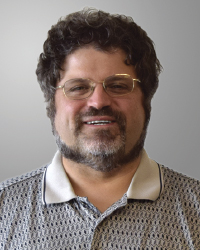 Research in optics and photonics as well as advancements in the design of versatile bedside systems have achieved breakthroughs in everything from our understanding of cellular metabolism to the ablation of scar tissue after an injury. But this research has too often been focused on concentrated groups of potential patients, geographically and demographically, which causes significant portions of the population that could be served by these breakthroughs to be underrepresented.
Research in optics and photonics as well as advancements in the design of versatile bedside systems have achieved breakthroughs in everything from our understanding of cellular metabolism to the ablation of scar tissue after an injury. But this research has too often been focused on concentrated groups of potential patients, geographically and demographically, which causes significant portions of the population that could be served by these breakthroughs to be underrepresented.
Women’s health research gets far less funding than it warrants, in comparison to men’s health, according to a study published in January by the World Economic Forum and the McKinsey Health Institute. Over a 10-year period, gynecological cancers were funded at well below their level of morbidity compared with other types of cancer, according to the U.S. National Cancer Institute. The National Institutes of Health and other agencies are beginning to mandate the inclusion of more female patients. Nevertheless, greater research focus is clearly needed.
As Irina Larina, professor in the department of physiology at Baylor College of Medicine, said in her plenary address at the recent Optica Biophotonics Congress, a lack of research not only hinders the development of effective diagnostic techniques but also contributes to a general lack of knowledge about the way systems function in the body. Larina pointed out that modern imaging techniques have only recently identified some of the biological processes that converge during fertilization.
Larina addresses some of her lab’s recent work using OCT to understand the functionality of cilia in the female reproductive system and throughout the body in a 3 Questions interview here. She said that by using time-lapse OCT imaging, they can capture intensity fluctuations caused by the periodic beat of these tiny structures, which could be the key to the circulation of cells. She said her colleagues could make many more discoveries in women’s health.
Momentum seems to be building. In our March/April edition, researchers from Washington University in St. Louis expounded on their use of laser speckle imaging to monitor blood flow changes following traumatic injuries or hemorrhages. Postpartum hemorrhage is too common, particularly in economically distressed areas, and it leads to unnecessary deaths, said Christine O’Brien, one of the article’s authors, during a panel at the aforementioned event.
Her fellow panelists argued that there is a disparity in the way public health is monitored throughout the world. An interdisciplinary approach is clearly vital to close gaps in understanding in not only women’s health but also underserved populations that currently have limited access to (and resources for) the technology that has proved to be so valuable at major research centers in the U.S. and abroad. Biophotonics is, and will always be, a global effort.
Enjoy the issue!
Douglas J. Farmer
